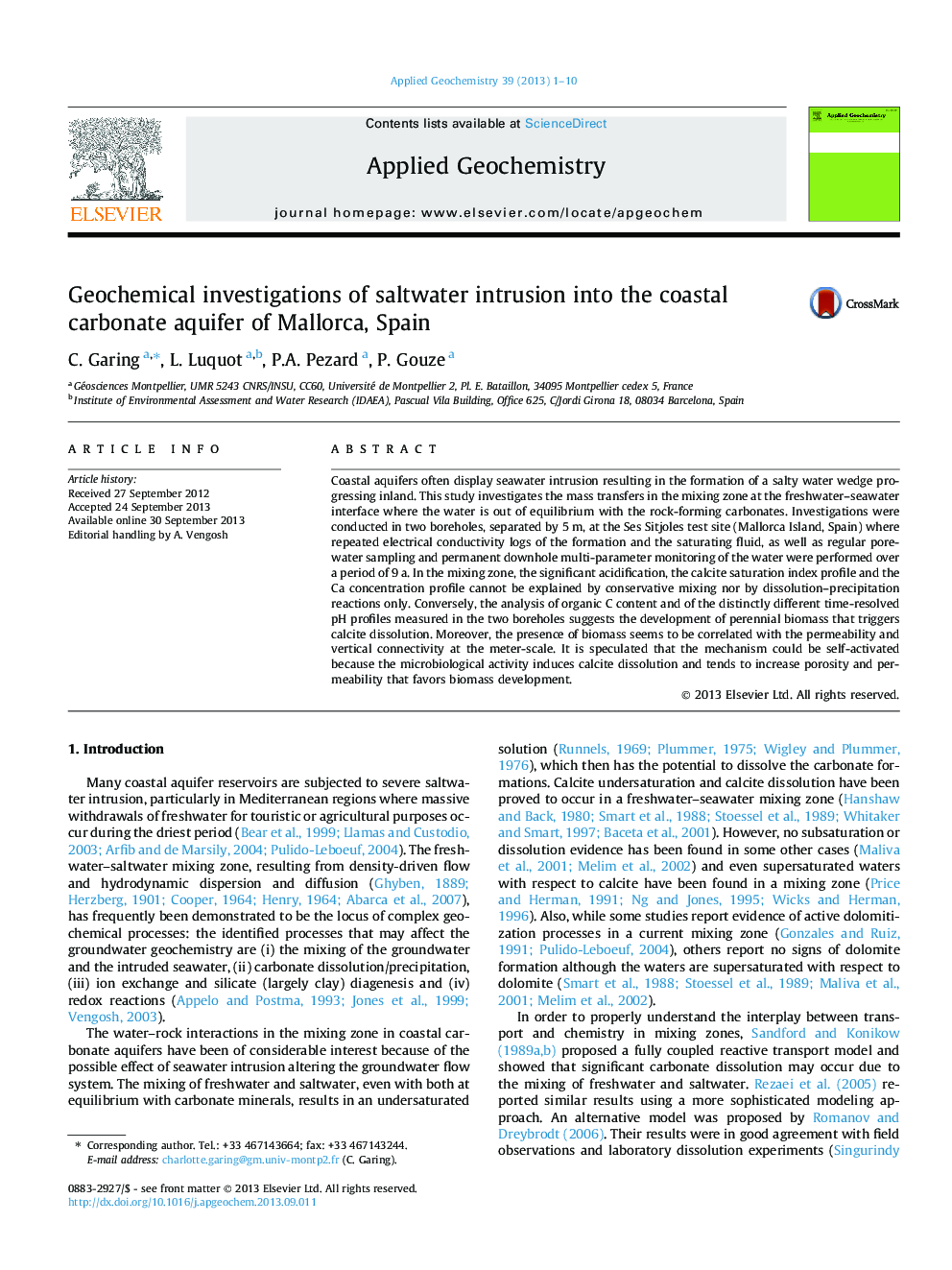| Article ID | Journal | Published Year | Pages | File Type |
|---|---|---|---|---|
| 4435883 | Applied Geochemistry | 2013 | 10 Pages |
•We monitor a saltwater intrusion at long-term and with combined methods.•The wide mixing zone is not at thermodynamical equilibrium despite very slow flow.•Calcite undersaturation and dissolution features are observed within the mixing zone.•The data highlight a pH acidification correlated with microbiological activity.•Bio-activated mass transfers are likely to be localized and increase heterogeneity.
Coastal aquifers often display seawater intrusion resulting in the formation of a salty water wedge progressing inland. This study investigates the mass transfers in the mixing zone at the freshwater–seawater interface where the water is out of equilibrium with the rock-forming carbonates. Investigations were conducted in two boreholes, separated by 5 m, at the Ses Sitjoles test site (Mallorca Island, Spain) where repeated electrical conductivity logs of the formation and the saturating fluid, as well as regular pore-water sampling and permanent downhole multi-parameter monitoring of the water were performed over a period of 9 a. In the mixing zone, the significant acidification, the calcite saturation index profile and the Ca concentration profile cannot be explained by conservative mixing nor by dissolution–precipitation reactions only. Conversely, the analysis of organic C content and of the distinctly different time-resolved pH profiles measured in the two boreholes suggests the development of perennial biomass that triggers calcite dissolution. Moreover, the presence of biomass seems to be correlated with the permeability and vertical connectivity at the meter-scale. It is speculated that the mechanism could be self-activated because the microbiological activity induces calcite dissolution and tends to increase porosity and permeability that favors biomass development.
